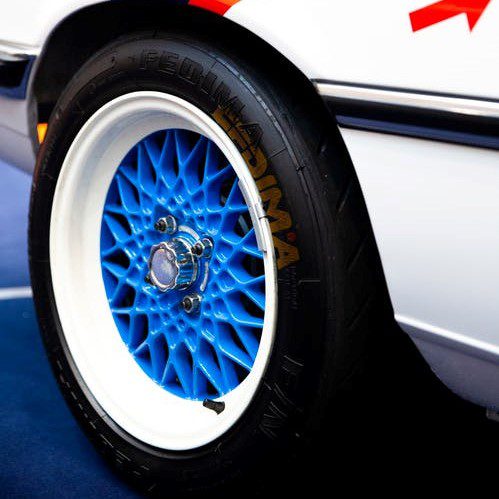Race car tires with little to no tread are called racing slicks or slicks. These are highly evolved and adapted forms of tires suited for use only on the race track because speed is prioritized over safety with regards to their manufacturing. Also the severity of the compromises these have to make in order to shave off that last tenths of a second off the lap times is simply unnecessary and outright dangerous in the real world. This is usually of little consequence in racing as race cars are only deployed under strictly controlled and regulated conditions. One of such adaptations is the lack of tread on these tires which obviously serves multiple functions but is considered a severe compromise for road-going vehicles. Here we dive into some of the reasons such ‘bald’ tires have become a staple in racing and why using such tires on the road could be a devastating choice.

Why do race cars use slicks with no tread?
1. Racing slicks provide better dry grip
Grip and traction are the top priorities for any tire that has the remotest relationship with racing. Smoother tires tend to have better dry grip as they contact the road better. Also, carving out grooves from the tires is bound to decrease the area of the contact patch which directly translates to lesser grip. An interesting fact here: worn out road tires actually have better dry grip and we’re being specific about the word ‘dry’. What happens in wet conditions is discussed later.
2. Racing slicks heat up quicker
Most race car tires use tires that perform optimally at temperatures much higher than those for road-going tires. Even before the race starts tires are pre-heated to about 80°C and temperatures frequently climb to 125°C during the racing sessions. Slicks have a much greater rolling resistance and a greater contact patch which generate more heat and optimal temperatures are reached much quicker than normal tires.
3. Racing slicks are easier to balance
Due to the uniform spread of rubber and no obvious asymmetries, race tires are much easier to balance than treaded ones. Wheel balancing is key when it comes to high speed stability and certainly very desirable if you’re going 200+ mph over certain stretches of track.
4. Racing slicks have better aerodynamics
Racing tires with no tread have better aerodynamics but not for the reason you might think. Treaded tires have greater diameter which means running a greater ride height. Lower ride height afforded by the slicks drastically improves the aerodynamics of race cars granting a higher top speed, better high speed stability and an exaggerated control in high speed corners.
5. Racing slicks undergo lesser deformity
Racing slicks undergo much less deformity under load due to the obvious reason: not having any grooves over the circumference. This is of utmost importance during high speed corners where lateral g forces regularly reach 3-4Gs and a huge amount of weight shift occurs.
Despite all these great improvements over normal tires, one extremely important shortcoming of such tires is the greater propensity to hydroplane. This is, however, of little consequence under normal race conditions where water is rarely ever encountered by the tires. However, things get interesting if it starts to pour down. This is where wet tires come into play which are sanctioned by most racing authorities. They have, yes you guessed it, tread. Resorting to treaded tires even by the racing authorities is testament to the need of tread on normal road tires, as they regularly have to face heavy downpours and it is not very convenient to switch out the sets of tires every time it rains, which is a standard practice in racing.
Use of wet tires in racing does, however, compromise grip and the lap times and the increased rates of spin outs and crashes clearly indicate that. But loss of grip is of little concern for road tires as they don’t have to handle as much power or high speed cornering to begin with. The tread on these wet tires serves as a channel for the evacuation of water from underneath the tires to facilitate contact which is also why worn out road tires are absolutely a no-go for driving in rain but actually perform better in dry conditions!
Why is tread so important for road tires?
We want to be very clear here: Full-on slick tires are banned for use on the road and are illegal in most states. All this begs the question: Why is tread so important?
Earlier we discussed how tread is essential for driving in rain as it significantly reduces the risk of hydroplaning and slippage. Also treated tires tend to perform much better over tricky terrains like snow, mud or sand as they can ‘dig’ and ‘claw’ their way out of situations. Since rain and such tricky terrains are frequently encountered with road-going cars, road tires have to use tread. Switching tires for such situations would be unnecessarily inconvenient and the reward gains would be slim to none under normal daily circumstances.
